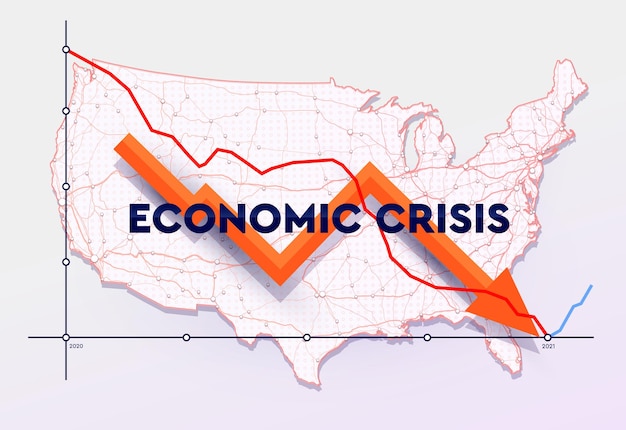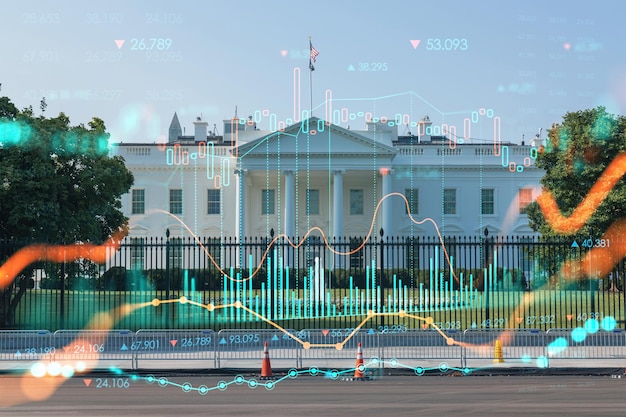US Inflation Rate: Understanding 3.4% and Its Impact on Your Wallet

Understanding the latest US inflation rate of 3.4% involves analyzing its causes, how it affects the cost of goods and services, and what strategies consumers can use to mitigate its impact on their spending power.
The US economy is constantly in flux, and keeping up with the latest financial news is crucial for making informed decisions. Recently, the US inflation rate has been reported at 3.4%. Understanding the latest US inflation rate of 3.4% and its implications for your spending power is essential for navigating your financial future.
What is Inflation and How is it Measured?
Inflation is the rate at which the general level of prices for goods and services is rising, and subsequently, purchasing power is falling. It’s a key indicator of economic health, and understanding how it’s measured is crucial.
The Consumer Price Index (CPI)
The Consumer Price Index (CPI) is the most widely used measure of inflation. It tracks the average change over time in the prices paid by urban consumers for a basket of consumer goods and services.
The Personal Consumption Expenditures (PCE) Price Index
The Personal Consumption Expenditures (PCE) Price Index is another important measure of inflation. It is published by the Bureau of Economic Analysis (BEA) and reflects the prices of goods and services purchased by individuals in the United States.
- CPI measures out-of-pocket expenditures, while PCE includes goods and services purchased on behalf of consumers.
- PCE is subject to revisions, allowing for a more accurate reflection of consumer spending patterns.
- Both CPI and PCE are used by the Federal Reserve to make monetary policy decisions.

The 3.4% inflation rate is a significant economic indicator that affects various aspects of daily life. Monitoring these measures helps in understanding the broader economic landscape and making informed financial decisions.
Breaking Down the Latest US Inflation Rate of 3.4%
The recent announcement of a 3.4% inflation rate in the US has sparked considerable discussion. This figure represents the annual increase in the CPI, indicating how much more consumers are paying for the same goods and services compared to last year.
Key Drivers Behind the 3.4% Inflation Rate
Several factors contribute to the current inflation rate, including supply chain disruptions, increased consumer demand, and rising labor costs.
Sector-Specific Inflation Trends
Inflation rates vary across different sectors. For example, energy and food prices are often more volatile due to external factors such as geopolitical events and weather conditions.
- Energy prices have seen significant fluctuations due to global supply chain issues.
- Food prices have increased due to factors such as labor shortages and increased transportation costs.
- Housing costs, including rent and mortgage payments, have also risen substantially.
Understanding the components that contribute to the 3.4% inflation rate provides a clearer picture of the economic pressures affecting consumers and businesses.
The Impact of Inflation on Your Spending Power
Inflation directly impacts your ability to purchase goods and services. As prices rise, your purchasing power decreases, meaning you can buy less with the same amount of money.
How Inflation Erodes Purchasing Power
With a 3.4% inflation rate, the real value of your savings and income diminishes over time. This erosion of purchasing power can be particularly challenging for those on fixed incomes, such as retirees.
Strategies to Protect Your Spending Power
There are several strategies individuals can use to mitigate the impact of inflation on their spending power, including investing in assets that tend to appreciate during inflationary periods, such as real estate and commodities.
Staying informed about inflation trends and adopting proactive financial strategies can help protect your spending power and maintain your standard of living.
Inflation and Interest Rates: A Closer Look
Inflation and interest rates are closely linked, with central banks often using interest rate adjustments to manage inflation. The Federal Reserve, for example, may raise interest rates to cool down an overheating economy and curb inflation.
The Federal Reserve’s Role in Managing Inflation
The Federal Reserve uses monetary policy tools, such as interest rate adjustments and quantitative easing, to maintain price stability and full employment.
How Interest Rate Hikes Affect Consumers
When the Federal Reserve raises interest rates, borrowing costs increase for consumers, affecting everything from mortgage rates to credit card interest.
- Higher mortgage rates can make it more expensive to buy a home.
- Increased credit card interest rates can lead to higher debt payments.
- Businesses may reduce investment and hiring due to higher borrowing costs.

Understanding the relationship between inflation and interest rates is crucial for making informed financial decisions and anticipating the impact of monetary policy changes on your personal finances.
Industries Most Affected by Inflation
Certain industries are more susceptible to the effects of inflation than others. Businesses with high operating costs or those that rely heavily on raw materials may face significant challenges during inflationary periods.
Energy Sector
The energy sector is particularly vulnerable to inflation, as rising oil prices can lead to higher transportation costs and increased prices for goods and services.
Food and Agriculture
The food and agriculture industries also face inflationary pressures due to factors such as rising labor costs, increased transportation expenses, and adverse weather conditions.
- Higher transportation costs can increase the price of imported goods.
- Labor shortages can lead to higher wages and increased prices for consumers.
- Adverse weather conditions can disrupt crop production and drive up food prices.
Analyzing which industries are most affected by inflation can provide valuable insights into the broader economic impact and help businesses prepare for potential challenges.
Strategies for Consumers to Combat Inflation
While inflation can pose challenges for consumers, there are several strategies individuals can use to mitigate its impact on their finances.
Budgeting and Expense Tracking
Creating a detailed budget and tracking your expenses can help you identify areas where you can cut back and save money.
Smart Shopping Habits
Adopting smart shopping habits, such as comparing prices, using coupons, and buying in bulk, can help you stretch your budget further.
- Compare prices at different stores to find the best deals.
- Use coupons and discounts to save money on everyday purchases.
- Consider buying in bulk for non-perishable items to reduce costs.
By implementing these strategies, consumers can minimize the impact of inflation on their spending power and maintain their financial stability.
Future Outlook for Inflation in the US
Looking ahead, the future outlook for inflation in the US remains uncertain. Various factors, including global economic conditions, supply chain dynamics, and monetary policy decisions, will influence inflation trends in the coming months.
Expert Predictions and Forecasts
Economic experts and analysts offer varying predictions for the future of inflation. Some believe that inflation will gradually decline as supply chain bottlenecks ease, while others fear that it could persist due to continued economic stimulus and wage growth.
Potential Scenarios and Implications
Several potential scenarios could play out in the coming months, each with its own implications for consumers and businesses.
Staying informed about these potential scenarios and their implications can help you prepare for the future and make informed financial decisions.
| Key Area | Brief Description |
|---|---|
| 💰 Inflation Rate | The current US inflation rate stands at 3.4%, affecting consumer spending. |
| 📈 Economic Impact | Rising prices reduce purchasing power, impacting household budgets. |
| 💡 Consumer Strategies | Budgeting, smart shopping, and investing can help combat inflation. |
| 🏦 Federal Reserve | The Fed manages inflation through interest rate adjustments and monetary policy. |
Frequently Asked Questions (FAQ)
▼
The latest reported US inflation rate is 3.4%, reflecting the annual increase in the Consumer Price Index (CPI).
▼
Inflation reduces your spending power as the same amount of money buys fewer goods and services due to rising prices.
▼
You can combat inflation by budgeting, tracking expenses, shopping smart, and considering investments that appreciate during inflationary periods.
▼
The Federal Reserve manages inflation by adjusting interest rates and using other monetary policy tools to maintain price stability.
▼
Industries like energy, food, and agriculture are typically more affected by inflation due to rising costs and supply chain disruptions.
Conclusion
Understanding the latest US inflation rate of 3.4% and its implications is crucial for making informed financial decisions. By staying informed, adopting proactive strategies, and seeking professional advice, you can navigate the challenges of inflation and maintain your financial stability.





